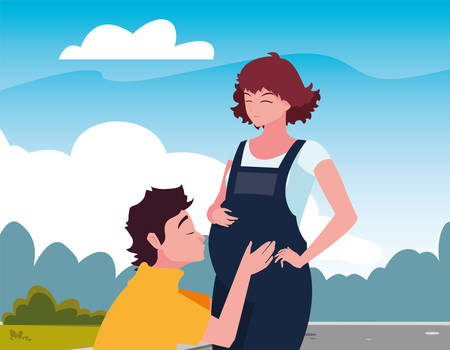1. Installing the Car Seat Incorrectly
Many parents fail to properly secure the car seat, leading to a loose fit or incorrect positioning. This can significantly reduce the seat’s ability to protect your child in an accident. Understanding the right way to install a car seat is crucial for your childs safety.
Common Installation Mistakes
- Loose Installation: The car seat should not move more than an inch side-to-side or front-to-back when pulled at the belt path.
- Incorrect Recline Angle: Newborns need a specific recline angle to keep their airways open.
- Using Both LATCH and Seat Belt: Most car seats require using either LATCH anchors or the seat belt, not both.
- Failing to Secure the Tether Strap: Forward-facing seats need the tether strap attached to prevent excessive head movement.
How to Install a Car Seat Correctly
- Select the Right Location: The safest spot is typically the back seat, away from active airbags.
- Tighten the Seat Properly: Once installed, give it a firm shake at the base; it should move less than an inch.
- Check the Recline Indicator: Ensure the seat is at the correct angle for your child’s age and size.
- Use Either LATCH or Seat Belt: Follow your car seat’s manual to determine which installation method is best.
- Secure the Tether for Forward-Facing Seats: Always attach and tighten the top tether strap when using a forward-facing car seat.
LATCH vs. Seat Belt: Which One Should You Use?
| LATCH System | Seat Belt Installation |
|---|---|
| Easier to use correctly in many cars | A better option if LATCH weight limits are exceeded |
| Might have weight restrictions | No weight limit concerns |
| LATCH anchors may not be available in all seating positions | Able to install in any back seat position with a seat belt |
2. Using the Wrong Car Seat for Your Childs Age and Size
Choosing the right car seat based on your childs weight, height, and age is crucial for their safety. A common mistake parents make is transitioning their child to a different seat too soon or using a seat that isn’t appropriate for their size. Here’s what you need to know to avoid this mistake.
Understanding the Different Types of Car Seats
Car seats are designed to provide the best protection for children at different stages of growth. Using the wrong type can compromise safety. Below is a quick guide to help you choose the right one:
| Car Seat Type | Recommended Age | Weight & Height Guidelines |
|---|---|---|
| Rear-Facing Infant Seat | Newborn to 2+ years | Up to manufacturer’s height/weight limit (typically 30-40 lbs) |
| Convertible Car Seat (Rear-Facing) | Infants and toddlers (recommended until at least 2 years old) | Varies by model, usually up to 40-50 lbs rear-facing |
| Forward-Facing Car Seat | Ages 2+ (or when they outgrow rear-facing limits) | Generally 20-65 lbs depending on seat specifications |
| Belt-Positioning Booster Seat | Around 4+ years (once forward-facing limits are exceeded) | Typically 40-100+ lbs, depending on booster type |
| Seat Belt Only | Around 8-12 years (when big enough for proper fit) | Mature enough for seat belt use without a booster; must pass the “5-step test” |
The Importance of Following Manufacturer Guidelines
No two car seats are exactly alike, so always check the manufacturer’s guidelines for height and weight limits. Just because your child reaches a certain age doesn’t mean they’re ready for the next stage—size matters more than age when it comes to car seat safety.
The Dangers of Moving to a Forward-Facing Seat Too Soon
The American Academy of Pediatrics recommends keeping children rear-facing as long as possible within the car seats weight and height limits. Rear-facing seats offer better protection in crashes by distributing force across the child’s back and head instead of focusing impact on their neck.
The Right Time to Transition to a Booster Seat
A common mistake is switching from a forward-facing harnessed seat to a booster too early. Kids should stay in a forward-facing seat with a five-point harness until they exceed its limits. A booster seat should only be used once they’re mature enough to sit properly without slouching or unbuckling themselves.
The 5-Step Test for Seat Belt Readiness
Your child is ready to transition from a booster seat to using just the vehicle’s seat belt when they pass these five criteria:
- Their back sits flush against the car seat.
- Knees bend naturally at the edge of the seat.
- The lap belt sits low on their thighs, not on their stomach.
- The shoulder belt lays across their chest and shoulder, not their neck.
- Your child can stay seated properly for an entire trip.
Avoiding These Common Mistakes Can Save Lives
Selecting the right car seat and transitioning at the correct time keeps your child safer in case of an accident. Always check height and weight limits before making changes, and prioritize safety over convenience.

3. Improper Harness Use
Straps that are too loose or incorrectly positioned can put your child at risk in a crash. A properly adjusted harness keeps your little one safe by ensuring they stay secure in their car seat during sudden stops or accidents.
Common Harness Mistakes
Many parents unknowingly make mistakes when securing their child in a car seat. Here are some of the most frequent errors:
| Mistake | Why Its Dangerous | How to Fix It |
|---|---|---|
| Harness straps are too loose | A loose harness wont hold your child securely in place, increasing the risk of injury in a crash. | The straps should be snug, with no slack. Perform the “pinch test” by trying to pinch the strap at your childs shoulder—if you can pinch excess webbing, its too loose. |
| Chest clip is too low | If the chest clip is positioned too low, it wont properly distribute force in an accident and may allow your child to slip out. | The chest clip should always be at armpit level to ensure proper positioning. |
| Straps are twisted | Twisted straps reduce effectiveness and can cause uneven pressure on your childs body in a crash. | Before buckling, always check that the straps lay flat against your child’s body without twists. |
| Incorrect harness slot usage | Using the wrong harness slots for your childs size can affect how securely they are restrained. | For rear-facing seats, harness straps should come from at or below the shoulders. For forward-facing seats, they should come from at or above the shoulders. |
How to Properly Secure Your Child
Step 1: Adjust the Harness Straps
Make sure the harness straps are at the correct height based on whether your child is in a rear-facing or forward-facing seat. Check your car seat manual for guidance.
Step 2: Tighten the Straps Properly
The harness should fit snugly against your childs body. A good rule of thumb is to perform the pinch test—try pinching the strap near your childs shoulder. If you can grab any fabric between your fingers, tighten it further.
Step 3: Position the Chest Clip Correctly
The chest clip should sit at armpit level. This ensures that in case of an accident, force is distributed across the strongest parts of your childs body—the chest and shoulders.
Avoid Bulky Clothing Under the Harness
Puffy jackets and thick clothing can create a gap between your child and the harness, making it less effective in an accident. Instead, dress them in thin layers and use a blanket over the straps if needed for warmth.
By ensuring proper harness use every time you buckle up, youre taking an important step toward keeping your child safe on every ride.
4. Placing the Car Seat in the Wrong Position
The safest place for a car seat is often misunderstood. Many parents assume that any back seat position is equally safe, but thats not always true. Choosing the right spot in your vehicle can significantly impact your childs safety in case of an accident.
Where Should You Place the Car Seat?
The best location for a car seat depends on several factors, including your vehicle type and how many children you need to secure. Here’s a general guideline:
| Car Seat Position | Safety Considerations |
|---|---|
| Center of the Back Seat | This is generally the safest spot because it provides the most protection from side-impact crashes. |
| Rear Passenger Side | If the center seat isn’t an option, this is often the next safest choice as it keeps the child away from traffic when loading and unloading. |
| Rear Drivers Side | This position is still safe but may expose the child to more risk when parked on the street due to passing cars. |
| Front Passenger Seat | Avoid this position unless absolutely necessary! Airbags can cause serious injury to infants and young children. |
Avoid These Common Mistakes
- Placing the car seat in the front seat: Front airbags can be extremely dangerous for babies and young children.
- Selecting a side seat when the middle seat is available: If your car allows a secure installation in the center, always choose that over a side position.
- Not checking your vehicle manual: Some vehicles have specific recommendations for car seat placement based on seat belt types and LATCH system availability.
- Ineffective installation: Always ensure that the car seat is tightly secured with either a seat belt or LATCH anchors.
Final Tips for Proper Placement
If youre unsure about where to place your childs car seat, consult both your cars manual and the car seat manufacturer’s guidelines. Additionally, many fire stations, hospitals, and certified Child Passenger Safety Technicians offer free inspections to ensure proper installation. Taking a few extra minutes to double-check placement can make all the difference in keeping your little one safe on every ride.
5. Wearing Thick Clothing in the Car Seat
Bulky jackets and thick clothing can create a dangerous gap between the harness and your child. This space may seem small, but in the event of a crash, the fabric compresses, making the harness too loose to properly restrain your child. This can lead to serious injury or even ejection from the car seat.
Why Thick Clothing Is Unsafe
Thick winter coats and puffy jackets prevent the harness from fitting snugly against your childs body. When the force of an accident compresses these materials, your child could slip out of the straps. To ensure maximum safety, always check for proper harness fit without bulky layers.
Safer Alternatives to Keep Your Child Warm
Instead of dressing your child in thick clothing before strapping them into their car seat, consider these safer alternatives:
| Unsafe Option | Safer Alternative |
|---|---|
| Puffy winter jacket | Dress your child in thin layers and add a warm blanket over the harness. |
| Thick snowsuit | Use fleece-lined clothing and hats to retain warmth. |
| Bulky hoodies under straps | A snug-fitting sweater or thermal shirt is a safer choice. |
The Pinch Test: Ensuring a Proper Harness Fit
A simple way to check if your childs harness is correctly tightened is by using the pinch test:
- Buckle your child into their car seat with their usual clothing.
- Tighten the harness as you normally would.
- Try to pinch the strap at your childs shoulder. If you can pinch any excess webbing, the harness is too loose.
- If the harness is too loose, remove bulky layers and tighten it again until you cant pinch any slack.
The Right Way to Use a Blanket or Coat
If its cold outside, you can still keep your child warm while maintaining car seat safety:
- Buckle your child in wearing thin layers.
- Tuck a warm blanket over them after securing the harness.
- If using a coat, put it on backwards over their arms after buckling them in.
Dressing your child properly for car travel helps ensure they stay both warm and safe. Always prioritize harness fit over bulky clothing when securing them in their car seat.


